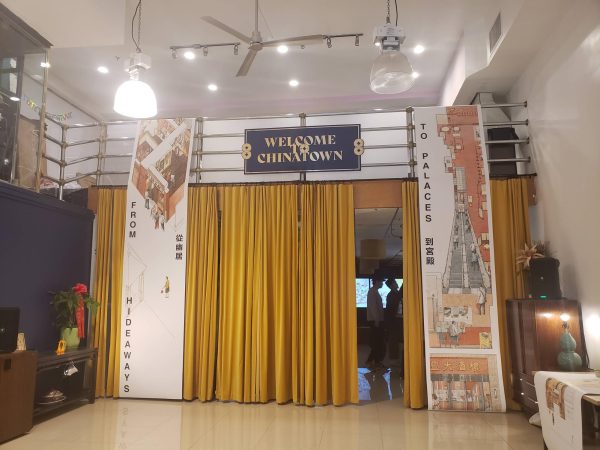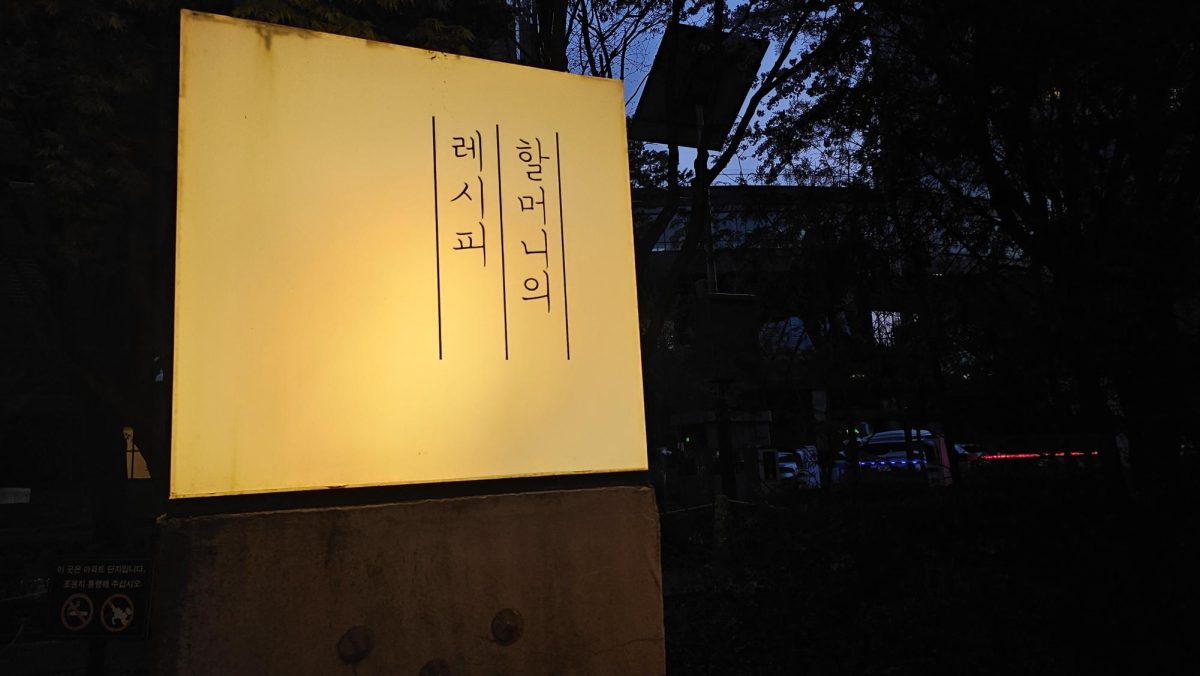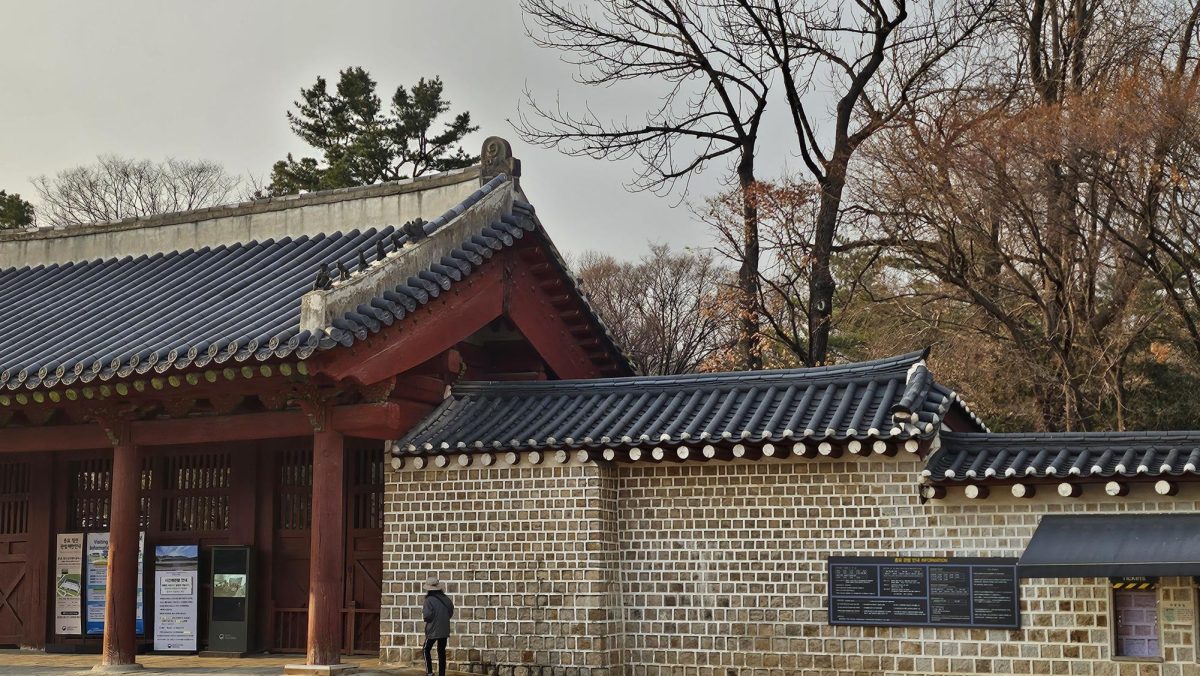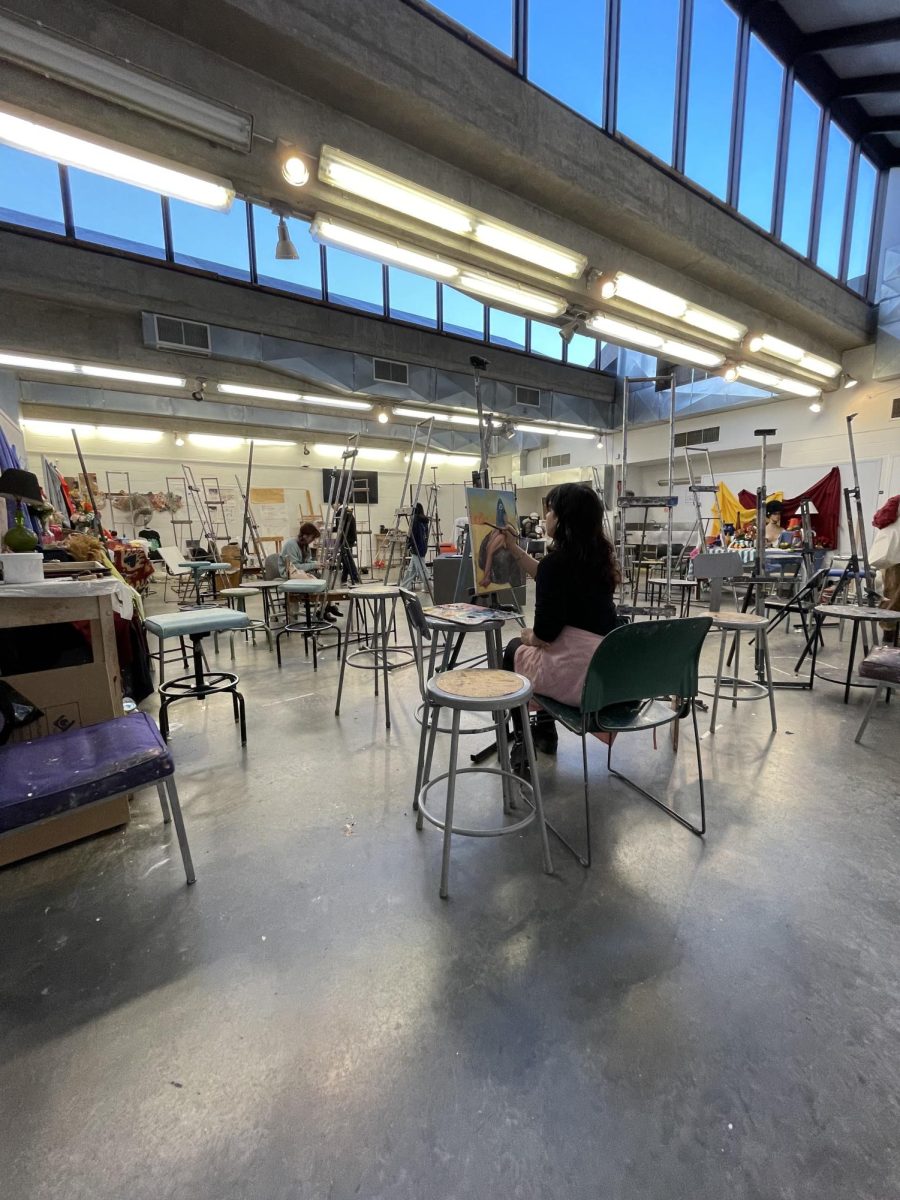
Rolling carts, bamboo baskets, large round tables and pots of tea: just some of the key characteristics of dim sum.
Directly translated as “touch the heart,” dim sum refers to an array of dishes that are typically paired with tea for brunch. As part of his research on Chinese American architecture, T.K. Justin Ng sketched and painted drawings of various dim sum establishments to tell a broader narrative within the context of Chinese history.
Some of these drawings were featured in the exhibit “From Hideaways to Palaces: Savoring Chinese American History through Dim Sum Restaurants,” which brings life to the architecture housing this bustling gastronomic culture. The exhibit ran from Dec. 2 to Dec. 3, 2023 as part of the launch of Welcome to Chinatown’s Small Business Hub.
“I was basically looking for a source of reference, like a very specific kind of space that exemplifies that character or group of people,” Ng said in an interview with The Statesman. “And unlike a lot of typical Western colonizer models where you do that through religion or through conquest or like [the] government, one could say that Chinese Americans, in those early days, started off more subtly through the creation of these restaurants.”
Among the various dim sum locations featured in the exhibit, spanning from San Francisco to Hong Kong, two were New York City staples: Nom Wah Tea Parlor and Jing Fong. Nom Wah originally functioned as a bakery and tea parlor when it opened up in 1920 before expanding to include dim sum in its various locations. Jing Fong has changed locations multiple times since 1978. Due to the loss of business during the pandemic, its Elizabeth Street location closed in 2021. Its current reiteration is much smaller and is located on Centre Street.
Another one of Ng’s drawings highlighted Jumbo Kingdom — a restaurant that used to float in Hong Kong’s Victoria Harbor. It was eventually towed away and sank in 2022.
The drawings relied mostly on primary resources due to a lack of research on Chinese American architecture in academia.
“Specifically, in terms of photos of these older restaurants, you don’t really see any of them from older than like 2005,” Ng said. “It’s very hard to find…The text and paintings rely, I’d say, 70 to 80% on just like me going, tracing things, measuring things. And also chatting with the owners of the restaurants, many of whom inherited it from the previous generations.”
With the exhibit being only a fraction of Ng’s extensive work, he looks ahead to figuring out how to disseminate the information he has compiled in an accessible format.
Besides drawings and text, the exhibit featured interactive elements allowing visitors to write or draw their favorite dim sum dishes, favorite restaurants and dim sum-related memories on poster paper. For many, dim sum restaurants house fond memories of time spent with friends and family.
“Every time I get to bring a good-sized group of friends to gossip over dim sum it’s a top-tier memory,” one person wrote.
“It was a great way to connect with my mother who immigrated from HK [Hong Kong] at an early age,” another person wrote. “I’m sure it gives her great comfort to have a taste of home in a faraway land.”
The organization behind the exhibit, Welcome to Chinatown, is a nonprofit that aims to support the needs of small business owners in the area and to “keep Chinatown open for generations to come.” In conducting an impact study to quantify the social and economic challenges faced by Chinatown’s small businesses, Welcome to Chinatown concluded that communal space for gathering and accessing resources and information was a potential solution. Thus, the hub was created.
The project is being helmed by Ng and his team at Spaced Agency. Welcome to Chinatown is continuing to fundraise for its official opening in the future.
“Architecturally, what I have found interesting is a certain desire to create spaces that are sticky [when referring to public spaces where communities can gather] — sticky of memory, sticky of people — a place that accumulates people and accumulates atmosphere over time,” Ng said.


















